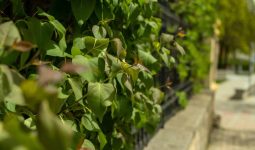Various options exist when choosing the right fence for your property. One popular choice is wood fencing, which offers aesthetic appeal and functionality.
If you’re in the market for a wood fence, it’s essential to understand the different types of wood fencing available and their respective qualities.
Wood fencing has been a staple in residential and commercial properties for centuries.
It provides a classic and timeless look that complements any outdoor space.
This article will explore the various types of wood fencing and help you make an informed choice for your property.
1. Split-Rail Fence
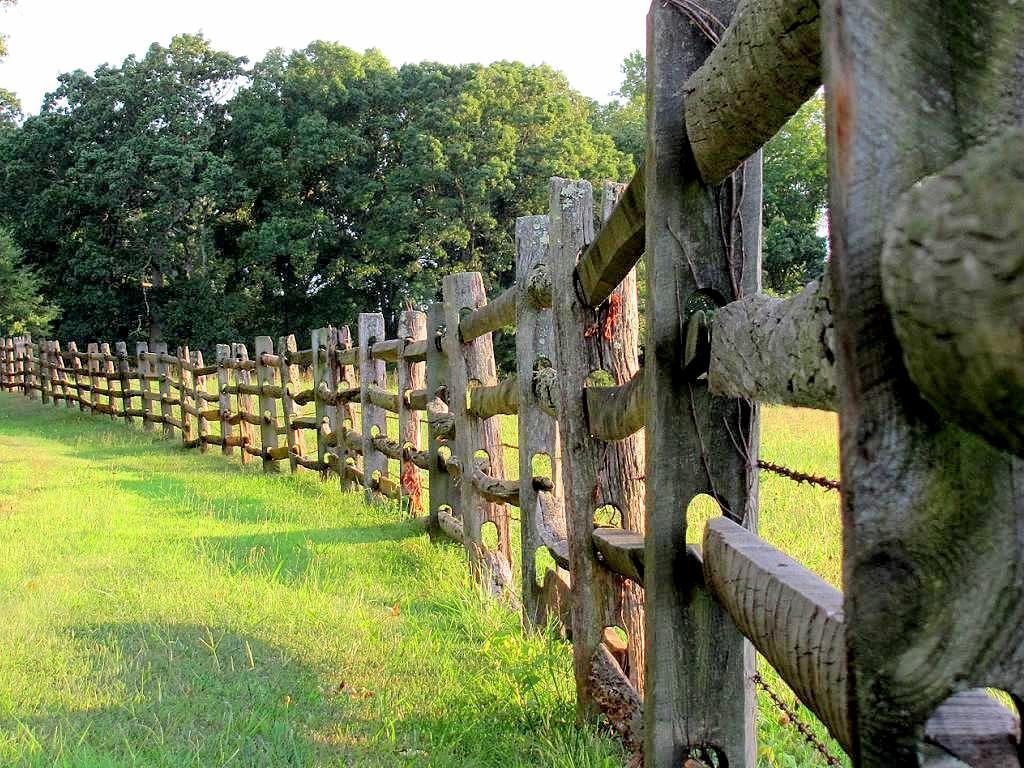
The split-rail fence is a classic and iconic design that evokes the simplicity and charm of traditional ranches and farms.
It refers to fences being constructed using readily available materials. These include logs split lengthwise into two or four long pieces.
These rails would then be connected to sturdy posts set at regular intervals. One of the defining features of the split-rail fence is its simplicity.
With just one, two, or three rails connecting the posts, it creates a visually appealing and rustic look that complements any country-style or farmhouse aesthetic.
This fence style is perfect for those who want a simple yet elegant boundary for their property.
While the cost of a split-rail fence may vary depending on materials and installation fees, building it yourself can save significant labor costs.
With basic carpentry skills and dedicated time, you can construct your split-rail fence and enjoy substantial savings. You can do all these without compromising quality or aesthetics.
Building your split-rail fence provides a cost-effective solution and gives you the satisfaction of creating something with your hands that adds character and charm to your property.
2. Louvered Fence

The louvered fence is next on the list of different types of wood fencing. It is a fantastic way to add a touch of modern style to your lawn while maintaining privacy.
The unique louvered pattern features vertical or horizontal pickets angled slightly, allowing light and air without compromising privacy.
This design creates a sleek and contemporary look that can elevate the aesthetic appeal of any outdoor space.
However, it’s important to note that constructing a louvered fence is not an ideal DIY project for most homeowners.
The intricate design and precise installation require a specialist with experience building louvered fences.
Hiring a professional familiar with this type of construction ensures that the fence will be installed appropriately, sturdy, and long-lasting.
Also, factors such as height, material choice, and labor expenses come into play when considering the cost of a louvered fence.
The overall price will vary depending on these factors and the specific location.
On average, you can expect to invest around $35 per linear foot for a louvered fence, similar to a standard privacy fence.
However, investing in higher-quality materials and designs may increase the overall cost.
3. Wood Lattice Fence

A wood lattice fence is an excellent choice for creating privacy in your garden, deck, or patio while allowing air and light to pass through.
The crisscrossing strips of lath create a visually appealing design that adds a touch of elegance to any outdoor space.
This type of fence is perfect for those who want to obscure the view from the outside while maintaining a sense of openness and connection with nature.
One of the most significant advantages of a wood lattice fence is its suitability for climbing plants.
The open structure of the lattice provides ample support for vines and creepers to grow.
Hence, it creates a natural green screen that adds beauty and charm to your outdoor area.
You can choose from various climbing plant options depending on your preference and the specific climate requirements.
These include ivy, roses, or vegetables like cucumber or beans. Not only do these plants enhance the aesthetics of the fence, but they also provide additional shade and privacy as they grow thicker over time.
4. Shadowbox Fence

Among the different types of wood fencing is the shadowbox fence. Shadowbox fences are popular for homeowners who want a fence that offers privacy without completely blocking out the surrounding view.
The design of the shadowbox fence includes a slight gap between the pickets, creating an alternating pattern that allows for airflow and some visibility from certain angles.
When viewed straight on, however, the fence provides complete privacy.
One of the benefits of shadowbox fences is their ability to strike a nice balance between constructing a solid wall of wood and allowing enough light to pass through.
This makes them perfect for planting shrubs or flowers along the edge of the fence perimeter.
They can still receive adequate sunlight while being shielded from direct view.
Also, the alternating picket design adds some aesthetic appeal to these fences, making them an attractive option for homeowners who value style and functionality.
However, it’s important to note that installing a shadowbox fence can be more challenging than other fence styles.
Achieving precise alignment and spacing between each picket requires careful measuring and skilled craftsmanship.
As a result, the cost of installing a shadowbox fence tends to be higher, typically ranging from $17 to $35 per linear foot, including materials and labor.
Despite these installation complexities, many homeowners admire shadowbox fences’ added privacy and appealing aesthetics.
5. Vinyl Fence
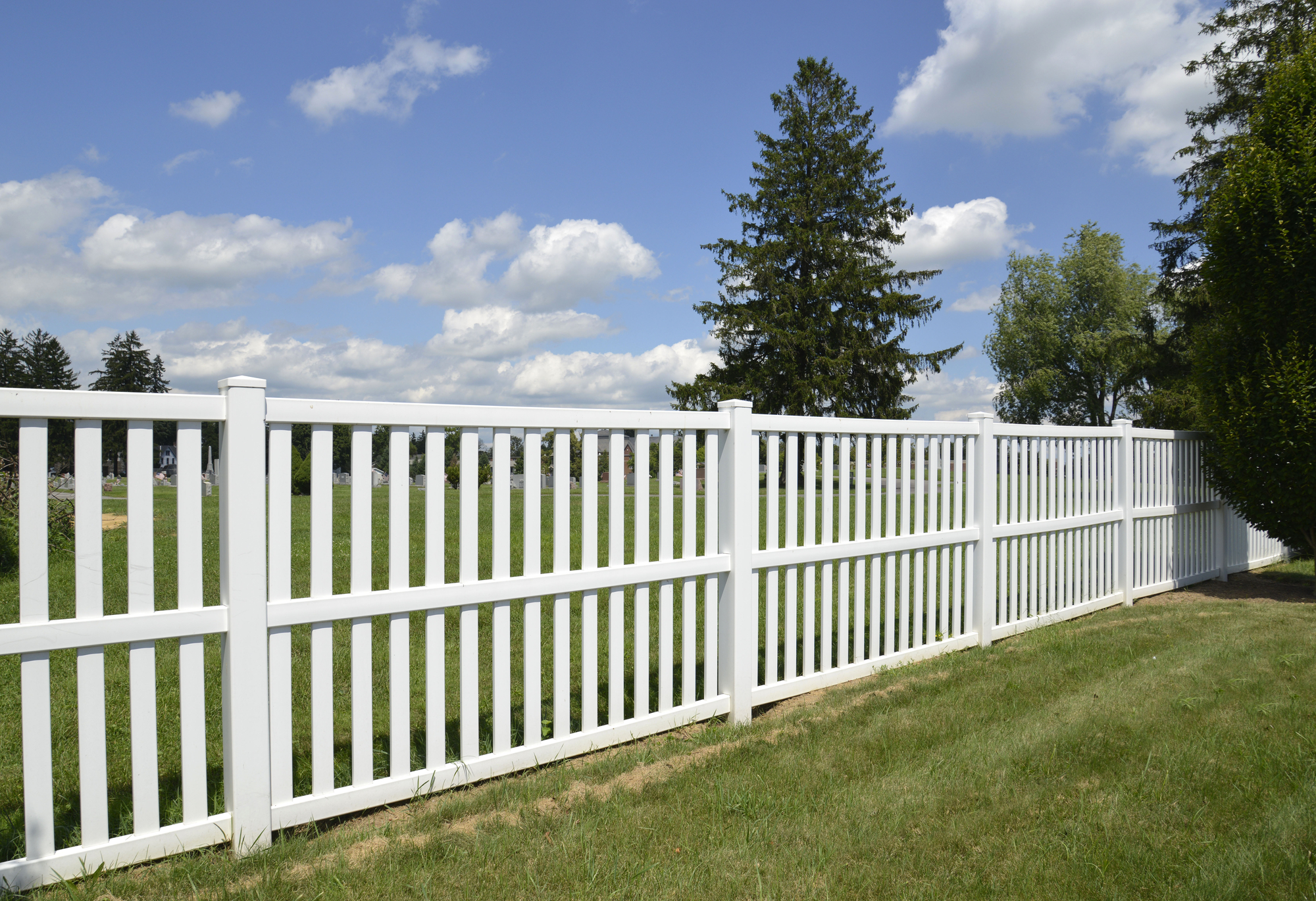
Vinyl or PVC fences are popular among homeowners due to their durability and low maintenance requirements.
These fences are constructed using hollow PVC posts and rails reinforced with metal or wood.
This combination of materials ensures the vinyl fence is strong enough to endure external pressures while providing long-lasting stability.
One of the significant advantages of vinyl fences is the extensive warranties manufacturers offer.
These warranties typically range from 20 years to a lifetime. Thus, homeowners can invest in a wall that will stand the test of time.
Also, vinyl fences require minimal upkeep. Unlike wood fences that need regular staining or painting, vinyl fences only require an occasional wash with water and soap to keep them looking clean and fresh.
However, one disadvantage of vinyl fences is their limited color options.
White and shades of beige are the most common choices available for vinyl fencing, which may limit the aesthetic preferences of some homeowners.
While white or beige may match well with many styles, those seeking more color variety may have to explore alternative fencing options.
Despite this limitation, vinyl fences’ overall benefits, durability, and low maintenance requirements make them popular for many homeowners.
6. Ornamental Fence
What’s this list of the different types of wood fencing without ornamental fences? Ornamental fences are a popular choice for homeowners who want to add a touch of elegance and sophistication to their property.
These fences are typically made from steel, aluminum, or fiberglass designed to resemble wrought iron’s look.
One of the most significant advantages of an ornamental fence is its durability. The fiberglass and aluminum options have lifetime warranties.
However, steel fences offer warranties that last between 10 and 20 years; these fences are built to last.
Another benefit of choosing an ornamental fence is the ability to customize its appearance.
Unlike other types of fencing, you can paint decorative fences in any color the homeowner desires.
This allows endless possibilities for matching the fence with the property’s overall aesthetic or making a bold statement with a pop of color.
Besides customization options, ornamental fences are famous for their strength and sturdiness.
Being made from solid materials such as steel or aluminum ensures that these fences can withstand harsh weather conditions and provide security for years.
However, despite their numerous advantages, ornamental fences do have some downsides. One notable disadvantage is the initial cost of these types of fences.
7. Side-by-side Fence
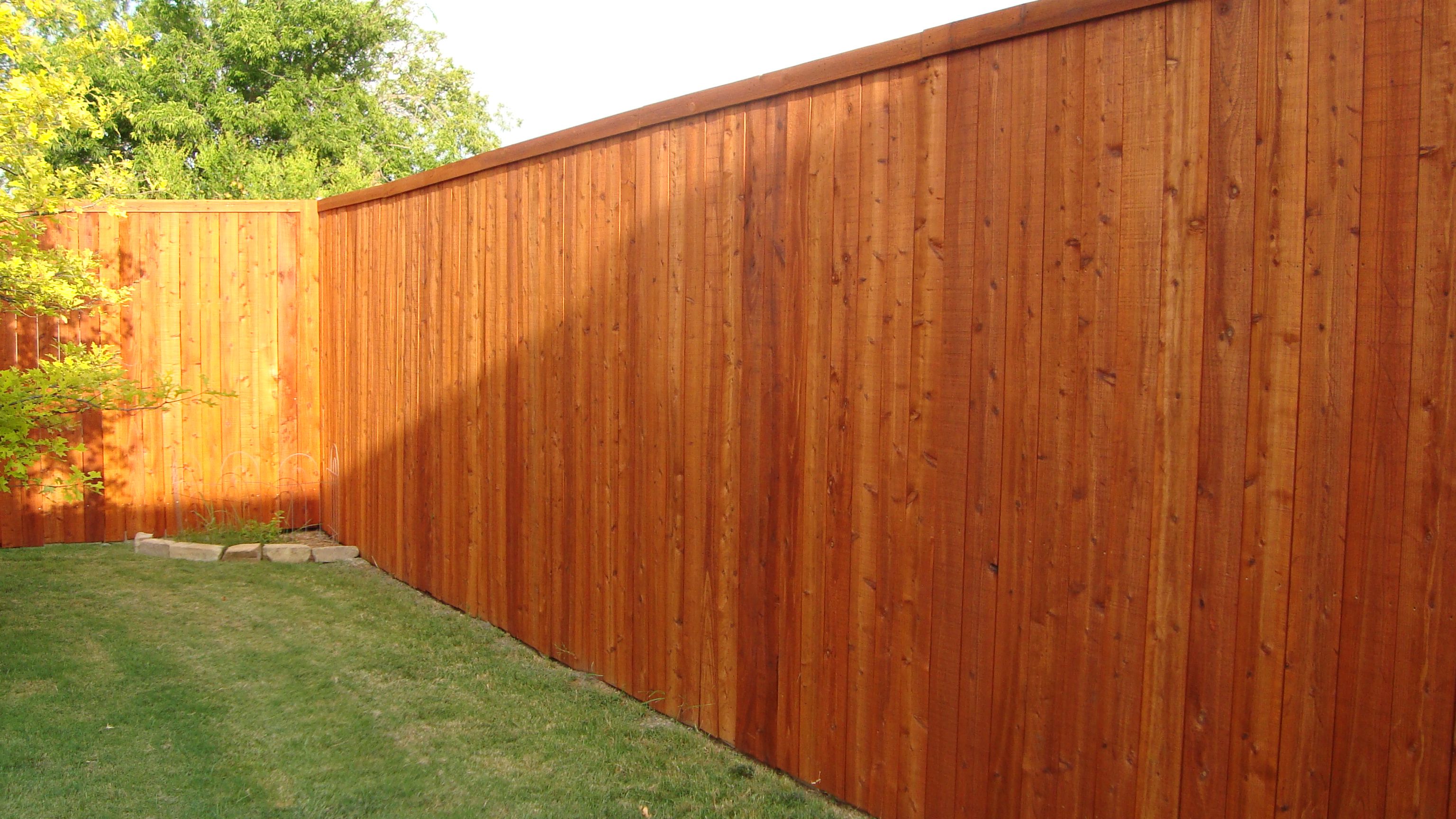
A side-by-side or stockade fence is an excellent option for those looking to maintain their privacy without breaking the bank.
This type of fence keeps things simple by placing the sides of the pickets right up against one another without overlap or angling.
This means no gaps between the boards, providing an effective barrier for keeping unwanted eyes out.
One of the significant advantages of a side-by-side fence is its affordability.
With costs ranging between $15 and $20 per linear foot, this style is much more budget-friendly than other complex installation methods.
By opting for side-by-side wood construction, homeowners can still enjoy the benefits of privacy fencing without spending exorbitant amounts on materials or labor.
However, it’s important to note that while side-by-side fences offer simplicity and cost-effectiveness, they may not be as durable as some other types of fencing.
Over time, the boards may warp slightly, creating small spaces between them or even splintering under pressure. This can compromise both the appearance and functionality of the fence.
Nevertheless, a side-by-side fence can still be a practical choice if you prioritize affordability and are willing to perform occasional maintenance to address these potential issues.
8. Hog Wire Fence
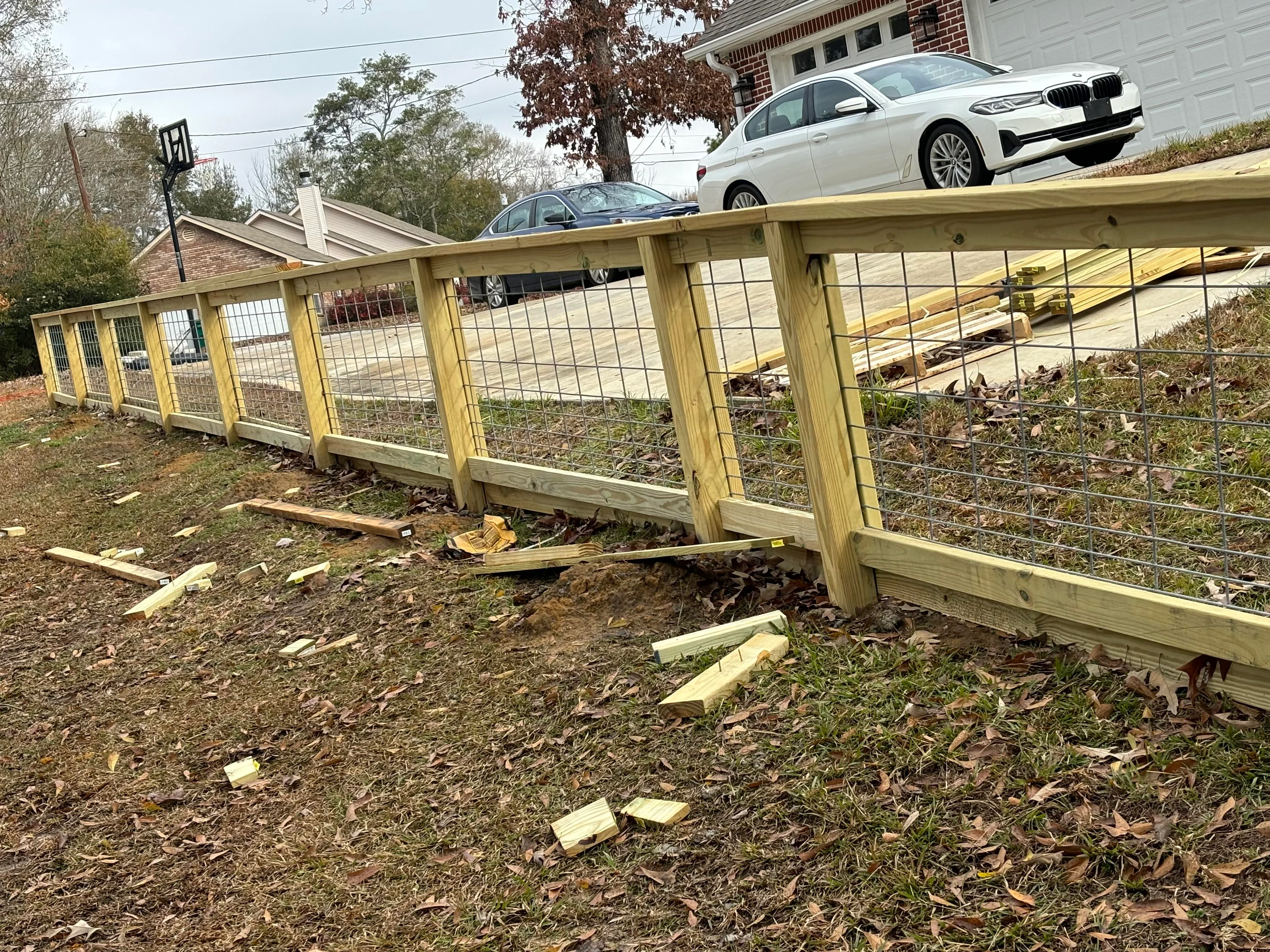
A hog wire fence is among the different types of wood fencing comprising wire panels with small openings.
People often call these openings “hog panels,” which are held in place by posts and rails made of wood.
The name might suggest that it is only used for containing pigs or other small livestock.
However, hog wire fences have become an alternative to chain link fencing for various applications.
One reason for this is their more visually appealing appearance compared to standard chain link fences.
The wooden posts and rails provide a more natural look, allowing the fence to blend better with the surrounding landscape.
Furthermore, hog wire fences are becoming popular due to their affordability. They can be a cost-effective option compared to traditional wood fences.
This makes them attractive for homeowners looking for an affordable yet durable fencing solution.
Also, hog wire fences are highly versatile and can be used in various situations. They work well in small yards, creating boundaries without cramming the space.
Moreover, these fences are ideal for enclosing areas that require frequent access, such as gardens or pet enclosures.
With their sturdy design and easy accessibility options like gates, hog wire fences provide security while maintaining convenience for regular entry and exit into specific areas of your space.
9. Chain Link Fence

Chain link fencing is a popular option for those looking for an affordable way to secure their yards.
It is known to be one of the most budget-friendly options available, making it appealing to homeowners on a tight budget.
Despite their low cost, chain link fences offer great benefits, such as providing clear views of the surrounding property.
This makes them an excellent choice for pet owners who want to keep an eye on their furry friends while they are outside playing.
This clear view also gives homeowners peace of mind by allowing them to quickly spot any potential intruders or suspicious activity surrounding their property.
Besides its affordability and visibility advantages, chain link fences are highly secure and durable, making them a common choice for commercial properties.
The interlocking mesh structure of chain link fences provides increased stability and resistance against forceful impact.
Moreover, their simple design makes chain link fences easy and fast to install.
They consist of posts connected with steel wires in a zigzag pattern, resulting in minimal labor time during installation.
This saves homeowners money and allows them to enjoy the added security from their new fence sooner.
10. Composite Privacy Fence
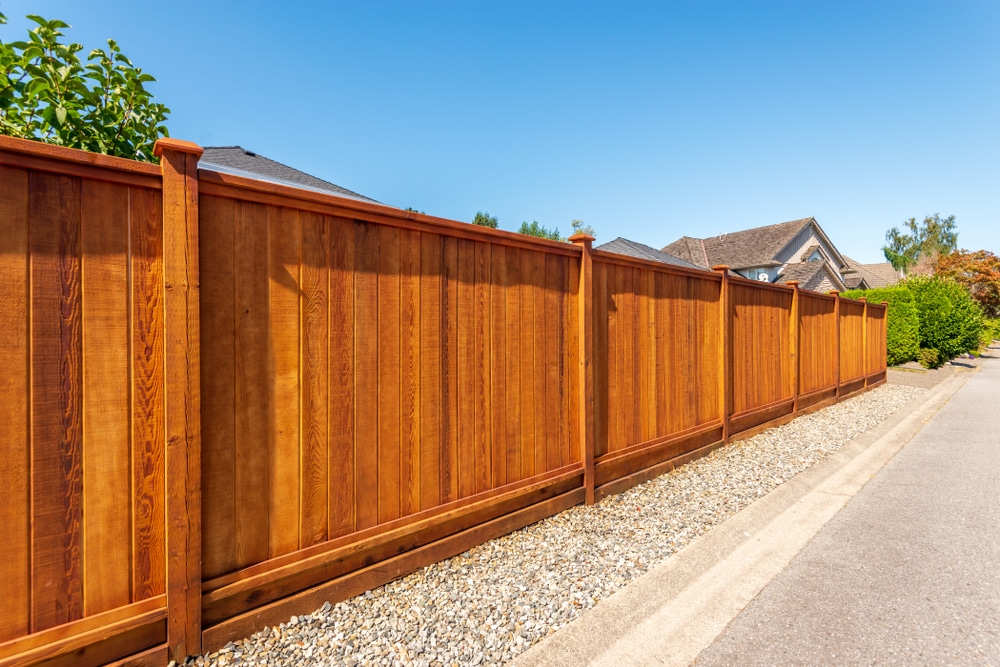
The last on our list of the different types of wood fencing is a composite privacy fence.
Composite privacy fencing is undoubtedly an excellent choice for those seeking a privacy fence that combines the aesthetics of natural wood with enhanced durability.
Unlike traditional wooden fences that are prone to damage from weather elements such as rain, sun, and insects, composite fencing offers the same wood-like appearance without the susceptibility to these factors.
This makes it a particularly appealing option for homeowners who want a long-lasting and low-maintenance fence.
With its ability to withstand the test of time, this type of fencing ensures that your privacy is safe for years.
In terms of investment, composite privacy fencing may require a higher upfront cost than other fences.
However, the benefits it brings outweigh the initial expenses. The combination of resin or plastic with wood components creates a strong and resilient material that doesn’t need frequent repairs or replacements like traditional wooden fences often do.
If privacy is a priority in your backyard, composite fencing provides an excellent solution that delivers functionality and enhances the overall aesthetic appeal of your outdoor space.
Available in various colors and designs, this type of fence allows you to customize it according to your style.
You can also seamlessly blend it into your surroundings for a polished look.
Conclusion
There are several types of wood fencing to choose from, each with unique features and benefits.
When selecting the right wood fence for your property, it’s essential to consider factors such as durability, maintenance, and aesthetic appeal.
You can enhance the look and functionality of your outdoor space with a beautiful wood fence.
And it doesn’t matter if you opt for a classic cedar fence, a sturdy pine fence, or a versatile spruce fence.





